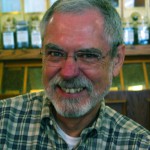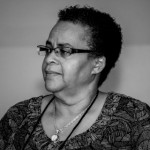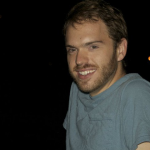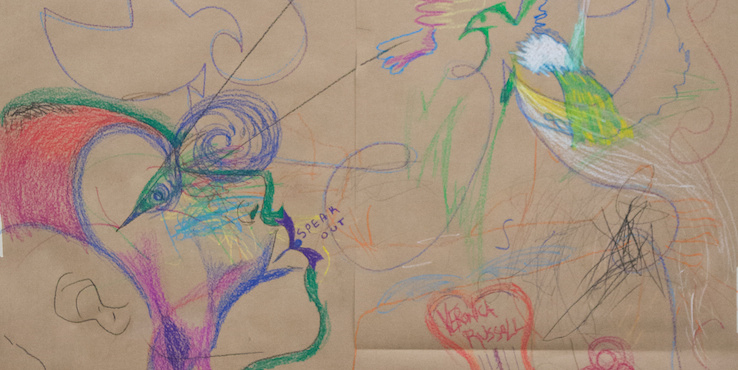By Nicole Gurgel (Albuquerque, NM)
This past ROOTS Week, several members facilitated a Learning Exchange on Aesthetics and Documentation, extending AlternateROOTS’ yearlong investigation into aesthetics as a concept and a practice. The panel was facilitated by Bob Leonard and Jan Cohen-Cruz, and four ROOTS artist-organizers spoke on the panel: Cristal Chanelle Truscott of Progress Theatre, Nick Slie of Mondo Bizarro, Linda Parris-Bailey of Carpetbag Theatre, and Mark Kidd of Appalshop. The Learning Exchange was well attended — at several points during the 2 hour session we had to expand the circle of chairs to accommodate nearly 100 people. Following the panelists comments, those in attendance engaged in a lively, provocative dialogue about aesthetics and its role in documentation. The entire session has been transcribed, and you can download the 75 page document here: ROOTS LE transcript. Below are select comments from the facilitators and panelists — a sampling of the thoughtful, complex ideas shared during this exchange. Enjoy!
________
 Bob Leonard: “I’d like to just offer, by way of a frame, working, temporary definition for aesthetics, which I think is sometimes a bit of a stumbling block. And this has been refined from the piece that we put together in the welcome packet. An inquiry into how artists, in their products and processes, utilized sensory and emotional stimulation and experience to find and express meaning and orientation in the world. And to deepen relationships amongst artists and their partners across differences. This came out of a recognition on my part that I didn’t really know what aesthetics, when it came down to it, meant. And I got turned on to a useful thought when I heard someone say anesthetics. Anesthetics, that’s to say not aesthetics, is something we take to deaden senses. So, aesthetics seem to me to be accessible for me to think about in terms of enlivening the senses. What do we do to enliven the senses? How do we recognize and respond to emotional content? Feeling? So, the senses are both the five senses of their body and our emotional life. And it seemed to me useful to think in terms of these practical aspects of aesthetics. There’s thousands, millions, an infinite amount of possibilities of how we do that, but what we’re talking about is that stimulation and response.”
Bob Leonard: “I’d like to just offer, by way of a frame, working, temporary definition for aesthetics, which I think is sometimes a bit of a stumbling block. And this has been refined from the piece that we put together in the welcome packet. An inquiry into how artists, in their products and processes, utilized sensory and emotional stimulation and experience to find and express meaning and orientation in the world. And to deepen relationships amongst artists and their partners across differences. This came out of a recognition on my part that I didn’t really know what aesthetics, when it came down to it, meant. And I got turned on to a useful thought when I heard someone say anesthetics. Anesthetics, that’s to say not aesthetics, is something we take to deaden senses. So, aesthetics seem to me to be accessible for me to think about in terms of enlivening the senses. What do we do to enliven the senses? How do we recognize and respond to emotional content? Feeling? So, the senses are both the five senses of their body and our emotional life. And it seemed to me useful to think in terms of these practical aspects of aesthetics. There’s thousands, millions, an infinite amount of possibilities of how we do that, but what we’re talking about is that stimulation and response.”
Crystal Chanelle Truscott: “Yeah, I think it’s a hard word, and it’s very difficult for me, as an artist, to articulate it in a way that I feel like captures everything that I think I do, or am trying to do, or am wanting to communicate. But I think, you know, in talking to Bob, and Jan, and Mark, one of the things — and even in the conversation that we had after the (inaudible) performance that became important for me was less about what it looks like, and more about what it does…
When people ask me what I do, and I said I do a cappella musicals, but then I pause, because I don’t know what that means. (laughter) Right, and I don’t know what comes to mind when someone hears the word musical, right? And I don’t know what comes to mind when they hear a cappella, right? And for me, it is the absence of the drum, because I’m thinking specifically about this African American historical trajectory of a cappella being there because the drums were taken, right. And so, it was figuring out how to use the body and the voice to create the polyrhythmic experience of the drum, right? So, that’s what I’m talking about, right? (laughter) You know, does that word a cappella, you know, capture that, right? And that musical, right, for some people, there’s going to be something that comes to mind. But for me, it’s about the necessity of song and telling story that it is the natural step in the progression, you know, of urgency, or this concept that I use called an unending climax, right? That again, I would say, for me, comes out of African American performance traditions of the necessity of it in terms of survival and endurance, right?
Which leads to these other forms of repetition that I spoke about after the performance that sometime — and I had interesting conversations with some people just this weekend — repetition in a European context can seem — it’s read as redundant, right? That it’s redundant, you already said that, you already did that, you already sang it that way, right? But in African American performance tradition, it’s about endurance, it’s about emphasis, and it’s about the remix, right? And it’s about how many different ways can you say something, right, to really get to the heart of it because it’s so hard to express, you know?”
 Nick Slie: “Three years ago, I started learning how to play the fiddle as a means of trying to learn French, because my grandparents only spoke French until after the war. And I started to realize, in my research of Louisiana, that since my great-grandmother spoke French, and my ancestors spoke French, that there was a certain amount of cultural memory that I don’t have access to, because I don’t speak the language of the people where I’m from. So, I didn’t just want to go take a French class, and I also discovered that my grandfather played Cajun music, so I’ve been trying to laboriously, and very painfully, learn how to play music and speak a language. And it started to make sense to me as a form of documentation in this conversation, because it makes so much sense to me, because there’s such a necessity in my body for it, because I’m like, I have to do this. And because I know I have to do it, it’s a big teacher. And it starts to invite me in how to think about,well, what is the use of this documentation? And it was the first thing before we started Cry You One that really invited me into seeing my own cultural traditions again in a new way, because I often say we’re not making anything up in New Orleans, we’re not innovative, we’re not contemporary. We’re simply, a lot of times, leaning into this very rich cultural palate that we have in front of us. And so, that invited me into thinking about social function of documentation, and how the people in New Orleans used their creativity, and their singing, and their dancing, and the way we cook as, like, a really clear social function, which is, like, we want to get people together, we want them to dance, right, we want them to honor, sometimes, folks who have passed, or honor a moment, and then we want to make some community, right…
Nick Slie: “Three years ago, I started learning how to play the fiddle as a means of trying to learn French, because my grandparents only spoke French until after the war. And I started to realize, in my research of Louisiana, that since my great-grandmother spoke French, and my ancestors spoke French, that there was a certain amount of cultural memory that I don’t have access to, because I don’t speak the language of the people where I’m from. So, I didn’t just want to go take a French class, and I also discovered that my grandfather played Cajun music, so I’ve been trying to laboriously, and very painfully, learn how to play music and speak a language. And it started to make sense to me as a form of documentation in this conversation, because it makes so much sense to me, because there’s such a necessity in my body for it, because I’m like, I have to do this. And because I know I have to do it, it’s a big teacher. And it starts to invite me in how to think about,well, what is the use of this documentation? And it was the first thing before we started Cry You One that really invited me into seeing my own cultural traditions again in a new way, because I often say we’re not making anything up in New Orleans, we’re not innovative, we’re not contemporary. We’re simply, a lot of times, leaning into this very rich cultural palate that we have in front of us. And so, that invited me into thinking about social function of documentation, and how the people in New Orleans used their creativity, and their singing, and their dancing, and the way we cook as, like, a really clear social function, which is, like, we want to get people together, we want them to dance, right, we want them to honor, sometimes, folks who have passed, or honor a moment, and then we want to make some community, right…
And so, yeah, the last thing I would say is just that Bob has really inspired me to think that aesthetics is a verb, it’s a feeling, it’s an action. So, it’s that I saw this, it made me feel, right, from what I saw. And then the big question is, well, what are we going to do about it? I was completely overwhelmed by Progress Theater yesterday, and I mistakenly tried to enter a conversation when I hadn’t dealt with what I was feeling already, right? And it just reminded me that, like, we have a responsibility, we have a duty when we feel and we see things to then figure out, OK, now how are we organizing about it, or how are we acting about it?”
 Linda Parris-Bailey: “I should also start by saying that I just came from a meeting of black theater artists who have been exploring some of these same notions, and it was hosted at the National Black Theater in Harlem, and I go back to Barbara Ann Teer, and her work, and how Crystal’s work connects with that, and how all of these points of contact, and the fact that we are here at ROOTS. So, there’s something common in our aesthetics, but I think it is based in value, so that when we talk about aesthetics, which we received as — and I’ll just put it this way, the hammer of European culture, beating back the work of other cultures, and so, you know, there was — there are two parts to my discussion about aesthetics. One is responsive, and the other is proactive, so that those two things came togetherin statements, you know, and we had to kind of self-define, and I think that is so much a part of the discussion about aesthetics, is that you have to understand the community and its aesthetic, and what you’re working for, who you’re working for, the voices that you’re trying to bring to the table and utilize. So, having said all of that, I’m with the Carpetbag Theater, and one of the things that’s inherent in the name itself is challenge. It’s a challenging thing, and the work that we are doing now, Speed Killed My Cousin, is as complex as our name…
Linda Parris-Bailey: “I should also start by saying that I just came from a meeting of black theater artists who have been exploring some of these same notions, and it was hosted at the National Black Theater in Harlem, and I go back to Barbara Ann Teer, and her work, and how Crystal’s work connects with that, and how all of these points of contact, and the fact that we are here at ROOTS. So, there’s something common in our aesthetics, but I think it is based in value, so that when we talk about aesthetics, which we received as — and I’ll just put it this way, the hammer of European culture, beating back the work of other cultures, and so, you know, there was — there are two parts to my discussion about aesthetics. One is responsive, and the other is proactive, so that those two things came togetherin statements, you know, and we had to kind of self-define, and I think that is so much a part of the discussion about aesthetics, is that you have to understand the community and its aesthetic, and what you’re working for, who you’re working for, the voices that you’re trying to bring to the table and utilize. So, having said all of that, I’m with the Carpetbag Theater, and one of the things that’s inherent in the name itself is challenge. It’s a challenging thing, and the work that we are doing now, Speed Killed My Cousin, is as complex as our name…
So, Carpetbag Theater, the ensemble, the company, believe in the power of story to frame experiences, and provide healing. And in that act of telling, we release the demons that hold us hostage over time. We believe that our values are revealed through our stories, and that those values revealed express or form our aesthetic. We believe that all aesthetic decisions and values are based in our cultural values, and the experience of the world, and that our experiences, though unique, conform to a set of norms that form the basis of a common community. Out of that community comes a particular set of standards for beauty. We believe in the collective experience that creates the aesthetic of a particular community, and that our work is in service to that community and accountable to it and its aesthetic. We believe in the power of art as the experience of cultural interaction, and that its value is based on the values of those experiencing the art. We believe that good and valuable art changes our way of seeing. We believe that when we practice these values and aesthetics, we create community and form ensemble. Ensemble is a foundation of our collective work. We believe that practicing ensemble enables us to enter any community with a set of core values that enables us to learn the aesthetic values of the community and respond accordingly in the creative process.”
 Mark Kidd: “I think there is an impulse to document that’s shared between the artist and the audience. One thing that I think is true in both groups is also that without some deliberation and thought, and sometimes prompting, both of those impulses can be expressed, kind of at the last moment as the response is happening, without an intention. But I really want to hold up my respect for the way that audience members, just as they might applaud spontaneously, or sigh, or shout something out, or snap our fingers, there’s a feeling that happens, a response to this stimulation, an emotional, a sensual, an intellectual response to work that causes people to pull out their camera, their phone. And that’s a moment with significance to understanding the way work is received. And certainly, we try, when possible, to put a professional camera on the audience, so we can see those moments of excitement, or we could maybe see when people are leaning in or making a noise. But whether that’s possible or not, I think the opportunity that the media provides, you know, with some pitfalls, is to ask audiences to be collaborators in the documentation of our work. And so, again, having the word aesthetics, for me, and being able to think in terms of what is the aesthetics of a home community, and also thinking about what is the aesthetics of a form that the artists have been using, perhaps in consultation creatively with a community, I think, is providing me a real focusing lens for how to prompt these sort of collaborative documentation processes, and also for kind of thinking about how to express what I feel are the significances to the places where people are taking the photographs.”
Mark Kidd: “I think there is an impulse to document that’s shared between the artist and the audience. One thing that I think is true in both groups is also that without some deliberation and thought, and sometimes prompting, both of those impulses can be expressed, kind of at the last moment as the response is happening, without an intention. But I really want to hold up my respect for the way that audience members, just as they might applaud spontaneously, or sigh, or shout something out, or snap our fingers, there’s a feeling that happens, a response to this stimulation, an emotional, a sensual, an intellectual response to work that causes people to pull out their camera, their phone. And that’s a moment with significance to understanding the way work is received. And certainly, we try, when possible, to put a professional camera on the audience, so we can see those moments of excitement, or we could maybe see when people are leaning in or making a noise. But whether that’s possible or not, I think the opportunity that the media provides, you know, with some pitfalls, is to ask audiences to be collaborators in the documentation of our work. And so, again, having the word aesthetics, for me, and being able to think in terms of what is the aesthetics of a home community, and also thinking about what is the aesthetics of a form that the artists have been using, perhaps in consultation creatively with a community, I think, is providing me a real focusing lens for how to prompt these sort of collaborative documentation processes, and also for kind of thinking about how to express what I feel are the significances to the places where people are taking the photographs.”
__________
 Nicole Gurgel is Alternate ROOTS Content Developer, as well as a writer, performance-maker, and educator living in Albuquerque, New Mexico.
Nicole Gurgel is Alternate ROOTS Content Developer, as well as a writer, performance-maker, and educator living in Albuquerque, New Mexico.


